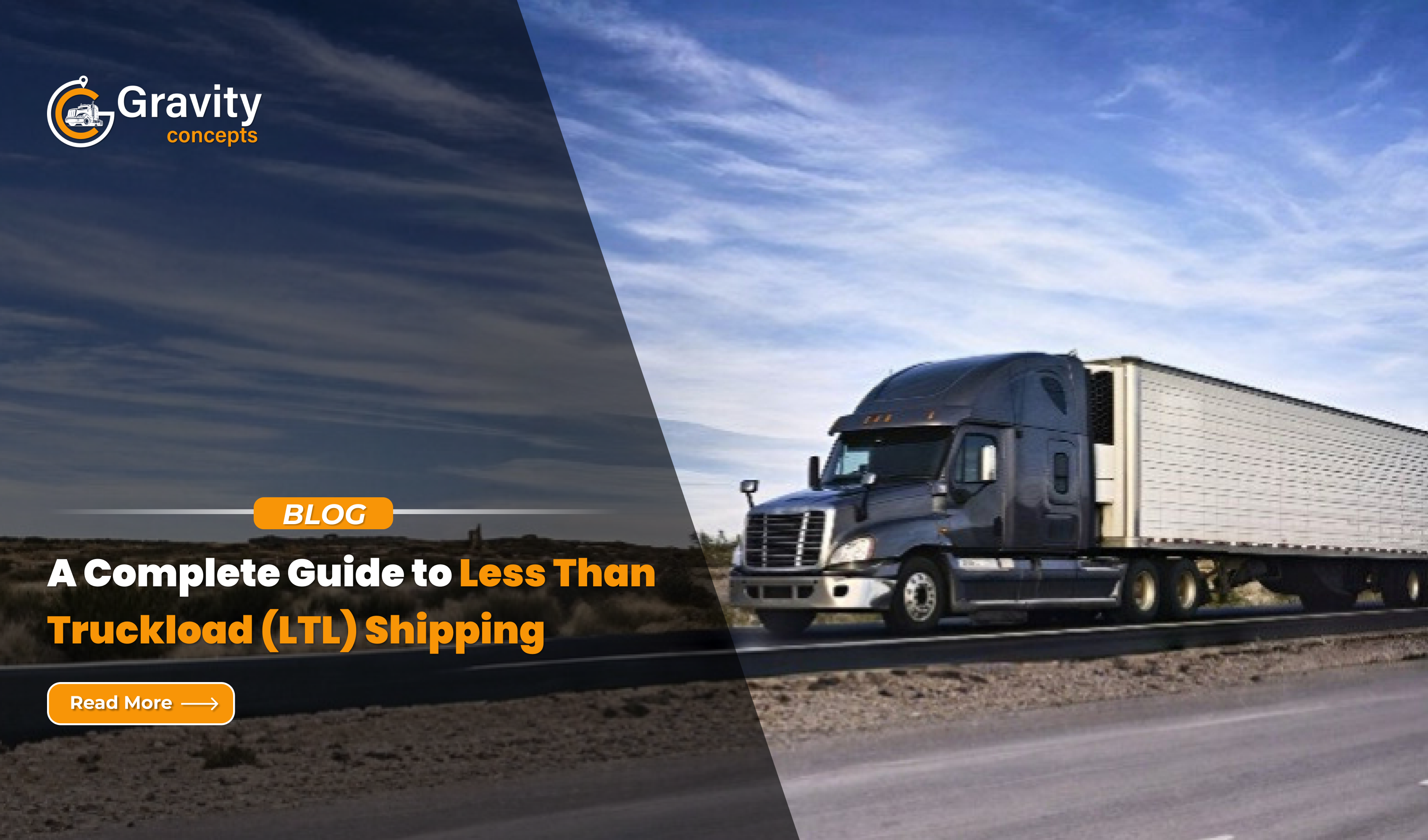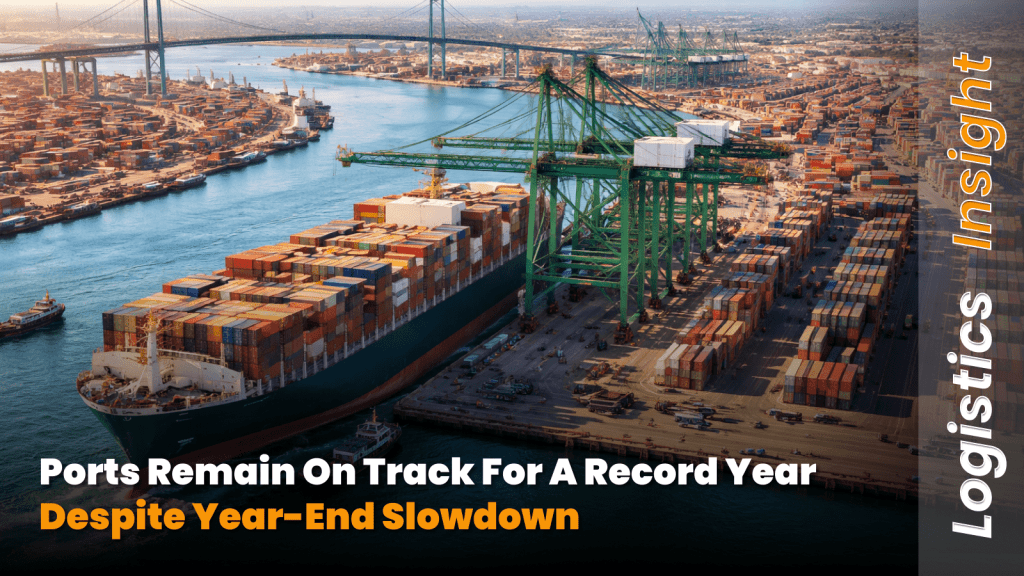
A Complete Guide to Less Than Truckload (LTL) Shipping
In the world of logistics and transportation, understanding the various shipping options available is crucial for businesses of all sizes. One of the most commonly used and cost-effective methods for transporting goods is Less Than Truckload (LTL) shipping. This type of shipping allows businesses to send smaller shipments that don’t fill an entire truck, making it an ideal solution for smaller freight loads. In this blog, we’ll explore the definition and meaning of Less Than Truckload shipping, how it works, the advantages, and the services of LTL.
What is Less Than Truckload (LTL)?
Less Than Truckload (LTL) shipping refers to the transportation of freight that doesn’t fill an entire truck. It is typically used when the shipment is too large for parcel delivery but too small to require a full truckload (FTL). LTL freight is consolidated into one truck, allowing each shipper to share the cost of the truck’s space.
While Full Truckload (FTL) shipping involves a dedicated truck for one customer’s freight, Less Than Truckload shipping allows businesses to pay only for the portion of the truck they use, making it a cost-effective solution for smaller freight needs.
Less Than Truckload is ideal for businesses with freight weighing between 150 and 15,000 pounds.
LTL Transportation: How It Works
LTL transportation works by consolidating smaller shipments from multiple shippers into one truck, maximizing the truck’s space and reducing costs for everyone involved. The freight is picked up from multiple locations, consolidated at a central terminal or distribution center, and delivered to various destinations based on the different customers’ needs.
Here’s a breakdown of the Less Than Truckload process:
- Pickup: The shipment is picked up from the shipper’s location by the LTL carriers.
- Consolidation: At a terminal, the freight is sorted and combined with other LTL shipments that are heading in the same direction.
- Transportation: The truck carries a variety of different goods, ensuring that each customer’s shipment is delivered to its destination.
- Delivery: Once the truck arrives near the final destination, the shipments are separated and delivered to the respective receivers.
This model enables businesses to ship smaller loads without the need for a full truck, lowering shipping costs.
Advantages of Less Than Truckload Shipping
Less Than Truckload shipping offers several advantages, especially for small to medium-sized businesses. Some of the key benefits include:
- Cost Savings: LTL is an economical choice because businesses share the cost of the truck’s space with other shippers. Instead of paying for an entire truck, businesses only pay for the portion their goods occupy.
- Flexible Shipping Options: Less Than Truckload offers flexibility for companies that don’t need to ship large volumes at once. It’s perfect for businesses with smaller, irregular shipments.
- Environmental Benefits: By consolidating shipments, Less Than Truckload freight reduces the number of trucks on the road, which helps reduce emissions and the overall carbon footprint of transportation.
- Wide Availability: LTL services are widely available, making it easier for businesses to access affordable shipping solutions no matter their location.
Less Than Truckload Services: What’s Included?
Less Than Truckload services include more than just the basic transportation of goods. Several value-added services can be included, depending on the carrier and the shipment’s needs:
- Standard LTL Services: These are the basic services where the freight is picked up, consolidated, transported, and delivered. The price is typically based on the size and weight of the shipment.
- Inside Delivery: This service involves delivering the freight inside a building, such as a warehouse or retail store, rather than just leaving it at the curb.
- Liftgate Service: For shipments that need to be loaded or unloaded from trucks without a loading dock, liftgate service is used to raise and lower the freight onto the truck.
- Residential Delivery: This service delivers freight to homes or residential areas, which typically require special handling or scheduling.
- Expedited LTL: When time is of the essence, expedited LTL allows for quicker deliveries compared to standard services.
- Temperature-Controlled LTL: For perishable goods, LTL carriers can offer temperature-controlled trailers to ensure that the shipment remains within the required temperature range.
LTL Freight Class and Pricing
Less Than Truckload pricing is based on a combination of factors, one of the most important being freight class. Freight classes are determined by the National Motor Freight Classification (NMFC), which categorizes goods based on size, weight, value, and ease of handling. The 18 freight classes range from 50 to 500, with lower classes being cheaper to ship than higher ones.
Other factors affecting LTL pricing include:
- Weight: Heavier shipments cost more to ship.
- Size/Dimensions: Larger shipments occupy more space in the truck and are priced accordingly.
- Distance: Longer distances increase shipping costs.
- Freight Characteristics: If the goods are fragile, hazardous, or require special handling, extra charges may apply.
Understanding how these factors influence pricing can help businesses choose the best shipping options and avoid unexpected costs.
When to Choose LTL Over FTL?
While Full Truckload (FTL) shipping is ideal for large shipments, LTL shipping is a better option for smaller loads. Here’s a comparison of when it’s more efficient to use LTL rather than FTL:
- Smaller Shipments: If your shipment doesn’t fill an entire truck, LTL is the way to go. FTL is only cost-effective if you have enough freight to fill the truck.
- Cost Efficiency: If you want to save on transportation costs, LTL allows you to share the truck’s cost with other shippers.
- Frequent Shipments: For businesses that ship small amounts frequently, LTL offers flexibility without the need to wait until they have a full truckload.
However, if your freight is large enough to fill a truck, FTL may be a better option due to faster transit times and potentially lower costs for very large shipments.
Tips for Managing LTL Shipments Effectively
To maximize the benefits of Less Than Truckload shipping, businesses should keep a few best practices in mind:
- Proper Packaging: Ensure that your freight is properly packaged to avoid damage and reduce the risk of misclassification. Well-packaged freight may also qualify for a lower freight class.
- Accurate Documentation: Make sure all necessary paperwork, including bills of lading and labels, are complete and accurate to prevent delays and potential fines.
- Consolidate Shipments: If possible, combine shipments going to similar destinations to reduce costs and improve efficiency.
- Choose the Right Carrier: Evaluate Less Than Truckload carriers based on their service quality, transit times, and pricing to select the best option for your business.
Popular LTL Carriers and Their Services
There are many reputable LTL carriers, each offering a variety of services. Some of the most popular carriers include:
- UPS Freight: Known for reliable services and wide coverage across North America.
- FedEx Freight: Offers a variety of LTL options, including standard and expedited services, along with temperature-controlled shipping.
- XPO Logistics: A major player in the LTL market, known for offering a range of value-added services.
- Old Dominion Freight Line: A highly regarded carrier with a reputation for on-time deliveries and excellent customer service.
When selecting a Less Than Truckload carrier, businesses should compare service options, pricing, and delivery performance to ensure they get the best value for their needs.
Conclusion
Less Than Truckload (LTL) shipping is an essential part of the logistics and transportation landscape. It offers a cost-effective, flexible solution for businesses looking to ship smaller loads without the need for a full truck. By understanding how Less Than Truckload freight works, its benefits, Less Than Truckload services, and pricing, businesses can make informed decisions that will optimize their shipping processes and improve their bottom line.
Whether you’re shipping small or irregular-sized shipments, LTL shipping provides the flexibility, cost savings, and reliability that can help your business succeed in a competitive marketplace.



